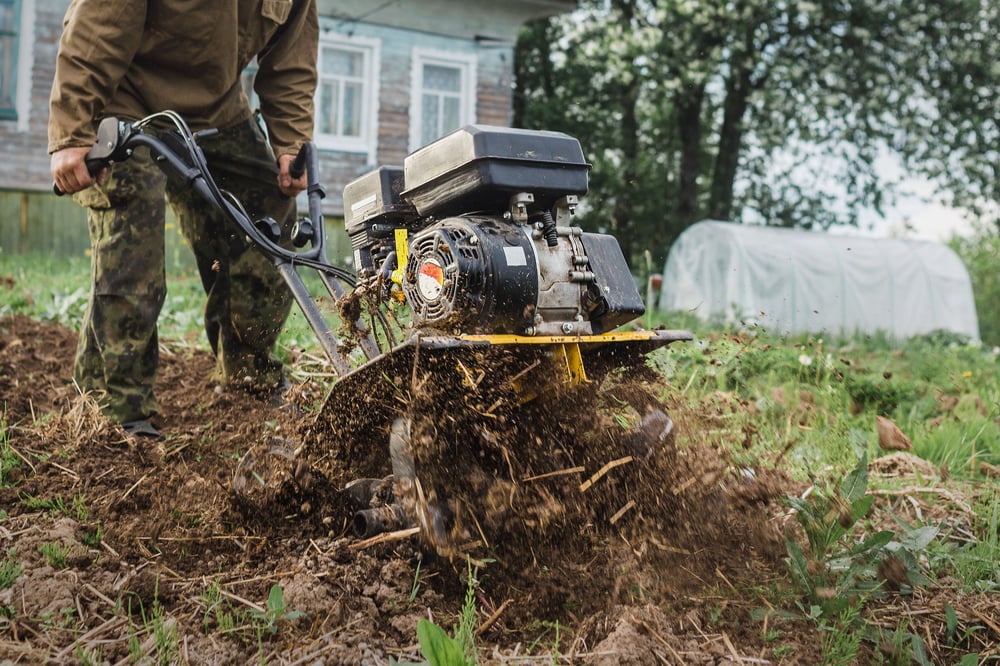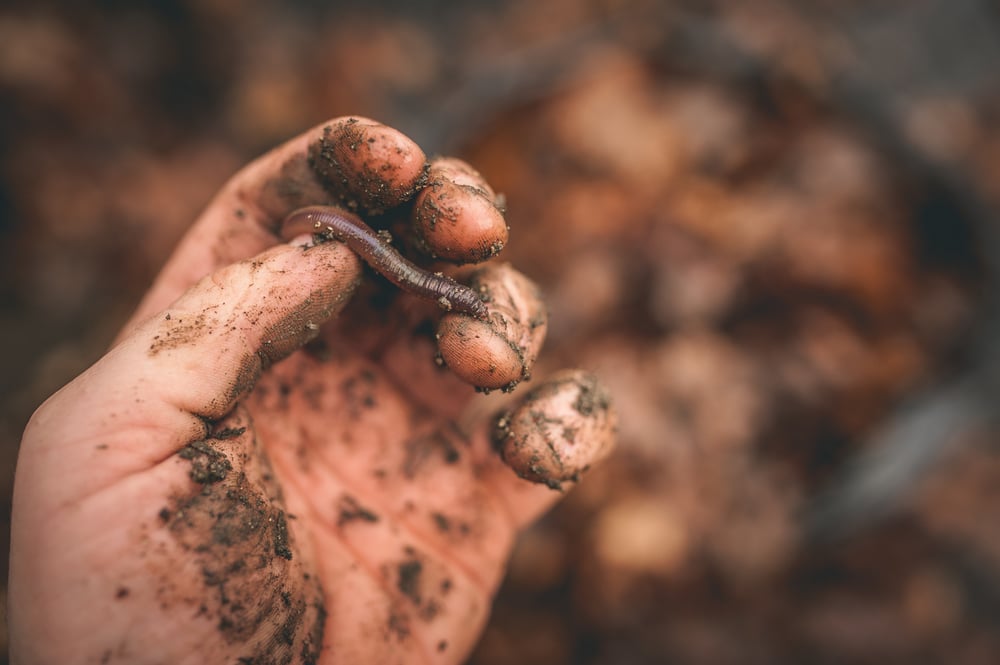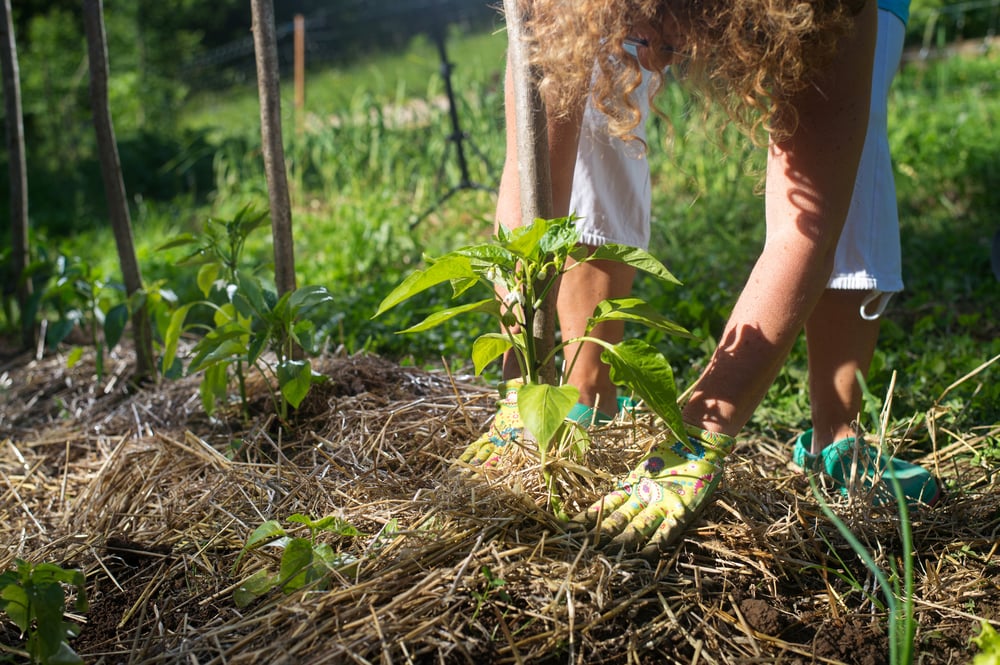As spring sets in, gardeners everywhere begin to get the itch to go outside to till the garden. But before you crank up the tiller, allow us and a gardening expert to share why we recommend a no-till gardening approach.
To the gardener, a newly tilled garden feels, smells and looks amazing.
But what if we told you that not tilling the soil is beneficial to both the dirt, plants and the organisms that live there?
We Interviewed A Gardening Expert To Learn More About No-Till Gardening
Mike Murphy is the owner of You Had Me At Gardening, an online advice hub for all plant, fruit and vegetable growers everywhere. The site's goal is to “help beginner gardeners create and maintain the gardens of their dreams.”
Murphy grew up in Kentucky, surrounded by farmland. Although he didn’t live on a farm, his parents were avid gardeners. Working alongside them, Murphy learned the basics and was exposed to organic gardening techniques.
“I’ve always had a passion for gardening,” says Murphy. “I now live in Utah with my family where we garden on half an acre of land. Each year we grow fruit trees, berry bushes, grapes and vegetables.”
On his land, Murphy practices no-till, organic gardening. In a no-till garden, the soil structure remains intact as long as possible. This means limited shoveling, no mixing of soil and fertilizers and (you guessed it) no tilling.
We interviewed Murphy to learn more about why a no-till garden is the approach gardeners should consider taking.
When It’s Okay To Till The Soil
Although Murphy recommends a no-till garden, there are times when tilling the ground is okay.

According to Murphy, tilling a new or existing garden plot has its benefits.
He says tilling is a good idea when you’re breaking new ground and need to remove any rocks beneath the surface. It’s also helpful to oxygenate naturally heavy soil and to amend any nutrient deficiencies. Together, these help build the soil for future no-till gardening seasons.
Tilling Breaks New Ground & Exposes Hidden Rocks
When you first till the ground is broken up to provide a jumpstart for the garden. Tilling or shoveling breaks up compacted soil and creates a soft space for new seedlings to be planted.
Tilling removes the top layer of dirt in areas with rocky soil, exposing rocks hidden in the ground. These rocks can be removed, loosening and oxygenating the soil, providing an open and healthy space for roots to grow downward.
Tilling Aerates The Soil
Another benefit of tilling is loosening and aerating the soil.
Aeration is the process of creating tiny holes in the soil. This allows water, oxygen and nutrients to penetrate deeper into the ground, making it easier to reach the roots of plants.
In addition, aeration greatly reduces the chance of root rot.
“If you’re starting with heavy soil, such as clay soil, it can be anaerobic,” explains Murphy. “This means no oxygen gets into the soil, which is usually very compacted from the beginning. The concept is to add organic matter, such as compost, to the top layer and till it into the ground.”
Tilling Can Help Mix Beneficial Organic Matter Into The Soil
Nutrient-deficient soil can be improved over time by adding and mixing in organic matter such as compost and fertilizer.
Add 3 to 4 inches of organic matter on top of the garden soil. Mix and work the amendments into the dirt with a tiller or shovel. Amending provides the soil with nitrogen, phosphorous and carbon — important ingredients required for a healthy growing season.
“Typically, amending soil with the use of a tiller is only needed in areas with poor soil quality,” says Murphy.
"Tilling organic matter into clay soil, for example, re-amends it and can prevent the good soil from washing away when it rains. Over time, as good soil is built up, a no-till approach can be applied to the garden — the ultimate goal. The benefits of a no-till garden certainly outweigh those of a regularly tilled garden.”

Here Are 6 Benefits And A Few Tips On How To Use A No-Till Approach In Your Garden
Benefit #1: Healthier, richer soil and plants
The primary benefit of a no-till garden is the creation and presence of healthy, rich soil. With a high nutrient value, no-till gardens typically produce higher yields and better-tasting produce.
“Sometimes, it takes a handful of years to benefit,” says Murphy. "But you’re going to start benefiting right away from the organic top dressing of compost and mulch. Vegetable and fruit plants with shallow roots are good to start with. The soil can change from a foot to 18 inches deep within about 5 to 8 years.”
Benefit #2: Feeds beneficial bugs, microbes, fungi and bacteria
Undisturbed soil provides a healthy home for the worms, bugs and microbes that live beneath the surface. Adding a top layer of organic compost or mulch is viewed as a feast for these organisms.
“When you top dress the garden, the earthworms come up to the surface, ingest it and break the organic matter down,” says Murphy. “The worms then pull that organic matter down into their network of tunnels. This then helps to oxygenate the soil and root systems. It all mixes and creates such a rich and healthy soil.”
Tilling garden soil exposes beneficial bacteria and fungi to sunlight, which in turn kills them off. Additionally, tilling is known for compacting soil again soon after tilling it, making it difficult for worms and bugs to easily move through the ground.
“Even if the soil is compacted, the bugs and worms will still exist, but they will have a difficult time accessing the top dressing,” says Murphy. “They have to try to squeeze back through, starting the process all over again. A no-till garden provides soft soil for worms to easily travel through and the roots to grow deeper.”

Benefit #3: No need for synthetic, store-bought bags of fertilizer
Why spend money on synthetic, store-bought bags of fertilizer when you can source natural alternatives from nature for free?
Leaf mulch, for example, is a great natural fertilizer for the garden. When added, it preserves moisture and raises the soil’s organic matter over time, benefiting plants while improving soil health.
Read more about the benefits of leaf mulch and how to make it in our article, How (and Why) to Make Your Own Leaf Mulch.
“Add about four inches of organic compost or mulch to the garden as a top dressing,” explains Murphy. “Don’t till it in, that’s the bug’s job! The worms, bacteria and beneficial bugs will break the organic materials down and turn them into fertilizer. Because you’re not mixing synthetic fertilizers into the soil, what you grow stays within that organic spectrum of gardening.”
Benefit #4: Reduces weeds
Weeding the garden is one of the top complaints from homesteaders and avid gardeners. One way of reducing weeds is to no longer till the ground.
“Think about the noxious weeds that you regularly pull out of the garden,” says Murphy. “Their tiny seeds fly around in the wind and end up sitting on the soil’s surface. So when you till, you sow weed seeds down into the ground.”
According to Murphy, tilling increases the likelihood of a more complex root structure, making it more difficult to pull the entire weed out of the ground.
“When you pull those weeds, you may not be able to get all the roots, and then they just grow back,” he explains. With a no-till approach, the weed seeds just sit on the surface, sprout, you can see them as little seedlings and they are much easier to pull out.”
Benefit #5: Absorbs and holds moisture better
A no-till garden maintains proper drainage and absorption below and above the soil’s surface.
“The soil, which is benefiting from the organic material top dressing, acts like a sponge,” Murphy explains. “When it rains, the water gets absorbed down into the ground, and it will hold moisture much better. As a result, you don’t have to water the garden as often.”
When tilled or over-tilled, the soil can become more compact, causing a shift in natural water pathways.
“In heavy or over-tilled soil, you’ll see puddling and even erosion occur,” says Murphy. “Nature has a way of creating natural pathways for water to move. When you till, you accidentally disturb that flow and absorption ability, creating a new stream and you risk flash flooding issues.”

Benefit #6: Previous plant’s roots benefit a no-till garden
Leaving plants in the garden to die and decompose is a common misconception among gardeners. Murphy explains that plants left to die and rot don’t always fully break down before the next growing season. The dead plant is only going to be in the way and require removal later.
“Take a tomato plant, for example. These plants can grow a few feet tall and several feet wide. So it can take them a while to decompose and be useful to the soil. Additionally, the root structure to support such a large plant is probably going to be very big. I recommend just cutting the plants off at the top, letting them break down in a compost pile or physically mulching them up. Later, you can spread that with other organic materials in your top dressing.”
How to leave plants in the garden to decompose:
- Cut the exposed tops of the plants off and leave the roots.
- Throw all the cuttings into a compost pile for decomposition, or you can physically mulch them and add them to the garden’s top dressing.
- Leave roots in the ground.
“I recommend leaving the roots in the ground,” says Murphy. “Trying to pull up a large root structure is difficult. By pulling roots out of the ground, you also pull up a whole lot of dirt with it. So, you’re basically tilling the soil. Just leave the roots.”
Choosing not to till the garden, or using low-till practices, offer many benefits for years to come
It saves you money, benefits the soil, provides a safe and healthy home for worms and microbes and keeps your produce healthy and nutritious.
Resist the urge to till, and you’ll soon witness a productive, Mother Nature-approved garden.
“By not tilling, you’re letting Mother Nature do her job,” says Murphy. “Sure, you’re assisting by adding the organic top dressing, but Mother Nature knows what she’s doing. Trust her and trust the process.”

























